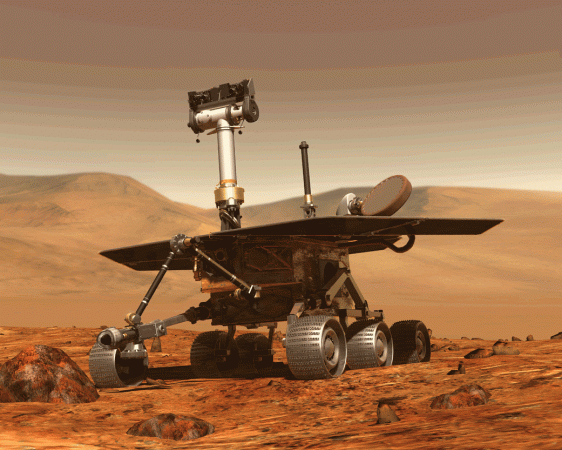
Mars was hit by a global dust storm early in June this year and in the middle of the storm was caught NASA's hardy Opportunity rover. Opportunity, caught in the dust went silent as it was put on hibernation mode so that it could weather the storm.
Without enough sunlight reaching its solar panels, it might not be possible for the rover's batteries to charge itself up and it is likely to face a cold death.
In a statement put out by NASA, the space agency has said that it is not possible to gauge exactly how Opportunity is doing till it wakes up and makes contact. However, there are a few things on the rover's side. Just before the batteries were powered down, NASA says that a number of studies on the battery's health were performed and they found that they were in good working order before the start of the storm.
Since the batteries were in good health, they might not have degraded too much. Also, dust storms like this tend to make the planet a bit warmer, so the batteries could have survived. Another important factor is that the place where Opportunity is now parked is going through its summer, so scientists have estimated that the rover might not have indeed suffered a cold death and stayed warm enough to survive the lack of sunlight.
Tau levels are important
Tau is the unit of measurement of sunlight availability and on Mars, the average tau, specifically where Opportunity works is reported to be at 0.5 and the last measurement sent back to Earth from the rover had the tau levels at 10.8. The higher the tau number, the less the sunlight reaching the surface, explains NASA.
NASA's Jet Propulsion Laboratory (JPL) engineers say that Opportunity's panels need a tau of less than 2.0 for the batteries to start recharging. To measure tau from the space, the Mars Reconnaissance Orbiter (MRO) will be looking for surface geographic features on the red planet to start measuring tau, notes the report.

Multiple times every week, NASA's Deep Space Network is made use to try and talk to Opportunity. DSN antennas are used to ping the rover at preset "wake-up" times. They then wait for a response.
Every day, JPL also records radio signals coming from Mars rover Opportunity's region, covering its daylight hours, looking for Opportunity's "voice."
If Opportunity does, in fact, recover in the coming weeks, NASA says that between the first response and the second one, there could be a lag of several weeks. Like a recovering coma patient, It could take time to get back on track and recover fully, notes the report. It is possible that it could take several weeks, maybe months before Opportunity is back to its science missions.

















